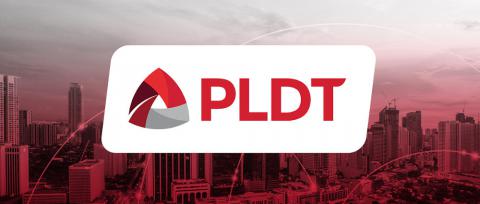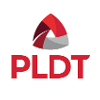
MANILA, Philippines, May 7th, 2020 — Continuing its growth momentum from 2019, PLDT raised service revenues by 9% to ₱41.5 billion in the first quarter of 2020 (Q1 2020) — a new high in its quarterly revenues. This increase was driven by data and broadband services, particularly on its wireless network, which now account for 71% of total revenues.
However, the outlook for the balance of 2020 has been affected by the COVID-19 pandemic, and the enhanced community quarantine (ECQ) implemented on Luzon and later extended to other parts of the country, starting the second half of March 2020 until the middle of May.
Still, amidst the challenges, new opportunities for growth have arisen. Life under the ECQ has pushed the rapid adoption of online and digital services as people working from home have turned to web-based collaboration tools, distance learning, online shopping and payments, e-health services, among others.
This has opened the door for PLDT, with its superior network and digital infrastructure, to promote an even more extensive adoption of the digital lifestyle for Filipinos.
Strong Revenue Growth
The Consumer Individual Business Group once more set the pace for growth, posting ₱20.2 billion in revenues, 20% up from the first quarter of 2019. PLDT Enterprise generated ₱10.1 billion in revenues, 3% higher than the previous year, while PLDT Home increased its revenues by 5% to ₱9.6 billion.
The combined service revenues of the Consumer, Home and Enterprise business groups grew by 11% to ₱39.9 billion and accounted for 96% of total revenues. The International and Carrier Business Group posted ₱1.6 billion of service revenues, 25% lower than the prior year.
EBITDA rose by 8% to ₱21.6 billion, with the 9% rise in service revenues more than compensating for increases in cash operating expenses. EBITDA margin remained at 52%.
Telco Core Income was lower by 5%, at ₱6.9 billion, as the rise in EBITDA was offset by higher depreciation and financing costs resulting from higher capital expenditures – the offshoot of the PLDT Group’s sustained network roll-out program. Also, last year’s 1Q2019 Core Income was exceptionally high, due to lower levels for cash opex. Still, PLDT’s telco core income in Q1 2020 was higher than its average quarterly telco core income of ₱6.8b in 2019.
Reported Income was ₱5.9 billion, 12% lower than the previous year, after taking into account our equity share in the results of Voyager Innovations and revaluation losses on our investment in Rocket Internet.
PLDT’s Net Debt as of Q1 2020 amounted to US$3,388 million while Net Debt-to-EBITDA stood at 2.03x. The Company’s Gross Debt was US$4,055 million, with maturities well spread out and only 6.7% of which are unhedged. Fixed-rate loans accounted for 84% of the total.
“The solid performance of our major business groups in 2019 flowing smoothly into the first quarter of 2020 provides us the firm footing needed to face the tough trials created by the pandemic in 2020 and beyond,” said Alfredo S. Panlilio, Smart President and CEO and PLDT Chief Revenue Officer.
“This early, we already see how the network infrastructure, expertise and technical resources that we have acquired, upgraded and made more resilient over the past several years are playing a major role in helping our customers rebuild their lives, and the country regain its prosperity,” he added.
Wireless Maintains Momentum
For most of the first three months of 2020, the Wireless Consumer business maintained its forward momentum in top-ups, driven by greater adoption of data among its subscribers and higher usage by existing data users. Mobile Internet revenues jumped nearly 40% versus the year ago level. As a result, the share of data revenues out of total wireless consumer revenues rose to 72%, up from 65% in 1Q2019 and 44% in 2018.
Mobile data usage continued to be driven by customer demand for video, social media services and mobile games delivered to prepaid subscribers through various GIGA load packages. When the lockdown came along, this was augmented by customers using various work collaboration apps conveniently bundled in a new service offer called GIGA Work. The productivity tools in GIGA Work include MS Teams, Google Meet and CISCO WebEx for videoconferencing, MS Office 365 and GSuite for work collaboration and PayMaya, Lazada, Shopee and Grab for delivery and payments.
The imposition of ECQ restrictions in mid-March initially caused a slowdown in daily load top-ups of mobile prepaid customers. But the picture improved in the second half of April as the Smart sales and distribution teams began using digital tools such as the Ka-Partner mobile app to allow retailers to buy their load remotely and thus ensure a continuous supply for customers.
The continued rise in data usage and revenues was made possible by the sustained enhancement and expansion of Smart’s mobile data network, particularly its 4G/LTE service. This was aided by the continuing shift of Smart’s customers to smartphones. By Q1 2020, about 71% of Smart, Sun and TnT mobile phone customers were using these data-capable devices.
“The strong growth in the Wireless Consumer Business in the first quarter has been tempered by COVID-19 as mobility and normal activity slowed down. But since then, there has been increased demand for data services to address people’s new work-from-home (WFH) routines as well as other stay-at-home activities. We are currently looking at solutions to further address the needs of consumers as everyone adopts to the emerging New Normal”, said Jane J. Basas, Senior Vice President and Head of the Wireless Consumer Business.
The Home as Office and School
PLDT Home posted a 5% rise in revenues due to improved installation of fixed broadband connections that started in the latter part of Q4 2019 and continued into the first quarter 2020.
These gains were made despite two major disruptions during this period — first, the eruption of Taal Volcano in January which affected sales and installation activities in the Calabarzon region, an important expansion market for fixed broadband services — and then the COVID-19 pandemic.
Despite these constraints, demand for PLDT’s fixed broadband services remained strong, driven in large part by people forced to work from home by ECQ restrictions. While making inroads in the fixed wireless sector with net new connects of about 80,000 in the first quarter of 2020, PLDT Home continued to dominate the fixed-line broadband market with the faster and more stable Fiber technology.
“Because the Home has become the office and school at the same time, internet connectivity and digital services have become even more indispensable to families and individuals under quarantine. This has opened the door to many opportunities for Filipinos to embrace digital tools that can help them cope with the challenges of living even after COVID,” said Menardo G. Jimenez, Jr., Senior Vice President for PLDT Home.
Doing Business Under COVID
The Enterprise Group posted ₱10.1 billion in service revenues in Q12020, up 3% from a year ago and the third consecutive quarter of steady growth.
Enterprise revenue growth in this quarter was constrained by business concerns over the impact of the virus outbreak, which resulted in projects being pushed back to the second half of 2020. This affected, for example, the ICT business which increased revenues by 6% instead of the usual double-digit growth rates it had posted in the past quarters.
On the other hand, many companies scrambled to support work-from-home arrangements for their employees, boosting demand for PLDT’s fixed broadband and fixed wireless data services. In particular, the growth of the Enterprise Wireless Business accelerated to 13%, with Postpaid rising 15% and Wireless broadband up 50% driven by WFH requirements.
“With our portfolio of fixed line, wireless and ICT services including data and cloud services, we are best positioned to help enterprises — large, medium and small — to redesign the way they do business so that they can continue to thrive under COVID conditions,” said Juan Victor Hernandez, Senior Vice President for Enterprise of PLDT and Smart.
‘Cashless’ is Part of the ‘New Normal’
In Q1 2020, PayMaya posted strong year-on-year growth across its synergized businesses — PayMaya Consumer, PayMaya Enterprise and Smart Padala, due to its successful "Cashless for All" campaign. This growth trajectory preceded the arrival of COVID-19. On the enterprise side, PayMaya has seen an increase in transaction volumes for previously cash-heavy sectors such as pharmaceuticals and groceries as Filipinos shop for essentials during ECQ. Transaction volume for eCommerce sites is now recovering with stronger demand especially for food, retail and logistics sectors. This will offset the expected downturn in volume from affected industries such as travel and leisure.
PayMaya has partnered with various government agencies to help the most vulnerable sectors of society cope with the effects of the COVID-19 pandemic. These include the Social Security System (SSS) for the Small Business Wage Subsidy program (SBWS); the Department of Social Welfare and Development (DSWD) for its Assistance to Individuals in Crisis Situations (AICS) fund; as well as the local governments of Manila, Mandaluyong and Quezon City. Through these programs, beneficiaries have received financial assistance directly to their PayMaya accounts which they can then use for digital transactions or cash out via Smart Padala.
On the consumer side, registrations to the PayMaya app have been growing strongly as Filipinos look for the fastest and most convenient means to access financial services, especially for sending money. In neighborhood communities, PayMaya's over 30,000 Smart Padala partner agent touchpoints have been serving as last mile front-liners for the financial industry during the pandemic.
On April 6, 2020, Voyager announced that it had raised up to US$120 million in new investments from its current shareholders PLDT, KKR, Tencent, IFC and IFC Emerging Asia Fund.
Network Improvements Continue
In the first quarter of 2020, PLDT and Smart continued their efforts to expand and upgrade their fixed and mobile networks, and implemented projects worth around ₱19.6 billion during this period.
PLDT increased the coverage of its fixed network to 7.5 million homes passed, 4% more than end-2019. Its total fixed-line capacity grew to 3.58 million ports, up 2% from end-2019, with 1.6 million ports of fiber-powered broadband available for new customers. In the same period, the total footprint of PLDT’s fiber optic network expanded by 5% to about 338,500 kilometers of fiber cables.
Smart further improved its mobile data coverage by adding 1,400 new 4G base stations, raising the total to about 26,000 from end-2019. It also added about 700 3G base stations, raising the total to 14,400.
The superior results of this expansion were validated by the latest Mobile Network Experience Report released in April 2020 by Internet analytics firm Opensignal which found that Smart remained ahead of competition in terms of Video Experience, Upload and Download Speed Experience, Voice App Experience and Games Experience. Moreover, the report added that “Smart broke away from Globe in the six months since our last report to take the 4G Availability award.”
“Smart’s LTE advantage has grown since the imposition of ECQ restrictions. In April 2020, we reallocated Smart’s assigned 1800 MHz frequencies from 2G to 4G/LTE. As a result, 3,785 2G base stations were converted into 4G base stations, thus further increasing the mobile data capacity of Smart’s network. What’s more, 1800 Mhz is the most commonly used 4G frequency on most smartphones today. So, this shift will benefit many 4G smartphone users,” said Mario G. Tamayo, Senior Vice President for Network Planning and Engineering of PLDT and Smart.
Response to COVID: Speed Boost
ECQ restrictions confined people to their homes, and consequently made them turn to internet connectivity and online collaboration tools in order to work and study. Even with the expected shift of data traffic from offices to homes factored in, the rapid move to WFH sparked a surge in data traffic of up to 20%.
PLDT and Smart responded to this turn of events by levelling up. PLDT Home provided its Fibr customers in the Greater Manila area with a speed boost that raised the minimum Fibr service speed to 25 Mbps. For its part, Smart doubled the data allocation for its postpaid customers and increased the size of the data packages for its prepaid customers.
Predictably, when supply met demand, data traffic spiked. On Smart’s mobile data network, for example, data payload rose to 636PB in the first quarter of 2020 – double the traffic in 1Q19 and a 26% increase from end-2019.
With people even more reliant than usual on internet services, PLDT and Smart took extraordinary measures to ensure data service availability. Several critical network facilities in Metro Manila were placed under total lockdown, with operating personnel required to stay on-site for the duration of the ECQ.
Assistance to Front-liners
PLDT and Smart also stepped up their activities to provide communications assistance to agencies and organizations at the forefront of the battle against the virus.
These COVID initiatives started with Smart providing free mobile data access to official information sources on the COVID pandemic such as the website of the Department of Health (DOH) in order to keep the public properly informed.
PLDT Enterprise set up COVID hotlines for the Departments of Health, Labor and Employment, Social Welfare and Development and Agriculture. It also provided hotlines and call center services for key government COVID hospitals such as the Philippine General Hospital, the Lung Center, the National Kidney Institute, as well as organizations such as the Philippine Red Cross.
Working with kindred companies such as the Metro Pacific Investments Corporation and Meralco, PLDT installed carrier-grade Smart WiFi at the COVID treatment facilities set up in the World Trade Center, Rizal Memorial Coliseum, the Philippine International Convention Center and the Philippine Arena.
PLDT and Smart also provided communications support for COVID command centers of national government agencies and local governments in Metro Manila and other parts of the country ranging from Baguio City in the North to Zamboanga City in the South. This assistance took the form of hotlines, fixed-line and pocket mobile WiFi, smartphones, SIMs, e-load and online messaging platforms like Infocast.
The Group also provided communications support for the deployment of various online applications designed to assist the public during the COVID crisis. Smart provided 540 smartphones to enable the government to implement throughout Metro Manila a service that enables front-line personnel like health workers to quickly get through quarantine checkpoints using an online application called RapidPass.Ph.
Smart has also provided free mobile data access to StaySafe.Ph an online application through which health information can be gathered from the public in order to assist health authorities keep track of COVID infections. StaySafe.Ph was developed by our affiliate company, Multisys Technologies Corporation.
Working with the foundations of MPIC, Meralco and other associated companies, the PLDT Smart Foundation provided assistance to frontline health workers, police and military personnel and affected communities in the form of personal protective equipment, food packs and essential items like alcohol.
Capex Guidance Tempered
First, PLDT’S original capex guidance for 2020 of ₱83.0 billion will probably be pared down, with anywhere between 20% to 25% of the budget deferred, suggesting that capex levels will be in the ₱60-plus billion level. Our network roll out activities have been constrained by the reduced mobility of our network teams since the ECQ was imposed.
The network roll-out for the balance of 2020 will prioritize projects that support the changing demand profile of our customers, and to help corporates revive their business under these new conditions.
Second, PLDT and Smart are in the process of developing new ways of conducting their business and serving customers. This will consist of flexible working arrangements that combine social distancing for employees at the office, work from home for other staff, with carefully conducted operations for field personnel.
Learning from their lockdown experience, management and staff will be using online collaboration tools much more extensively than before to run the business and address customer needs more effectively. To complement this, customers will be encouraged to use more self-help and digital applications like e-payments. Moreover, payables and receivables will be carefully managed.
Third, moving forward, the PLDT Group’s focus will be on helping customers adapt to their own new normal.
The Enterprise and Consumer business groups are, for example, developing a convergent approach to meet the greater need of government offices and private businesses to operate on flexible working arrangements that combine office work with social distancing and work-from-home routines. They are also collaborating on how to enable both public and private schools to restart in a safe and sustainable way through the innovative use of online/offline educational systems.
“Moving forward, there will be likely some softening of revenue growth in the second quarter this year. But overall, we expect revenues to stay on the growth path versus last year. Moreover, by focusing on helping companies, communities, families and individuals find the digital solutions that put them back on-track to prosperity, we will ensure that our services are maintained at a superior level across all sectors. This is the most sustainable way for PLDT to build a future in this New Normal,” concluded Manuel V. Pangilinan, Chairman, President and Chief Executive Officer of PLDT.


